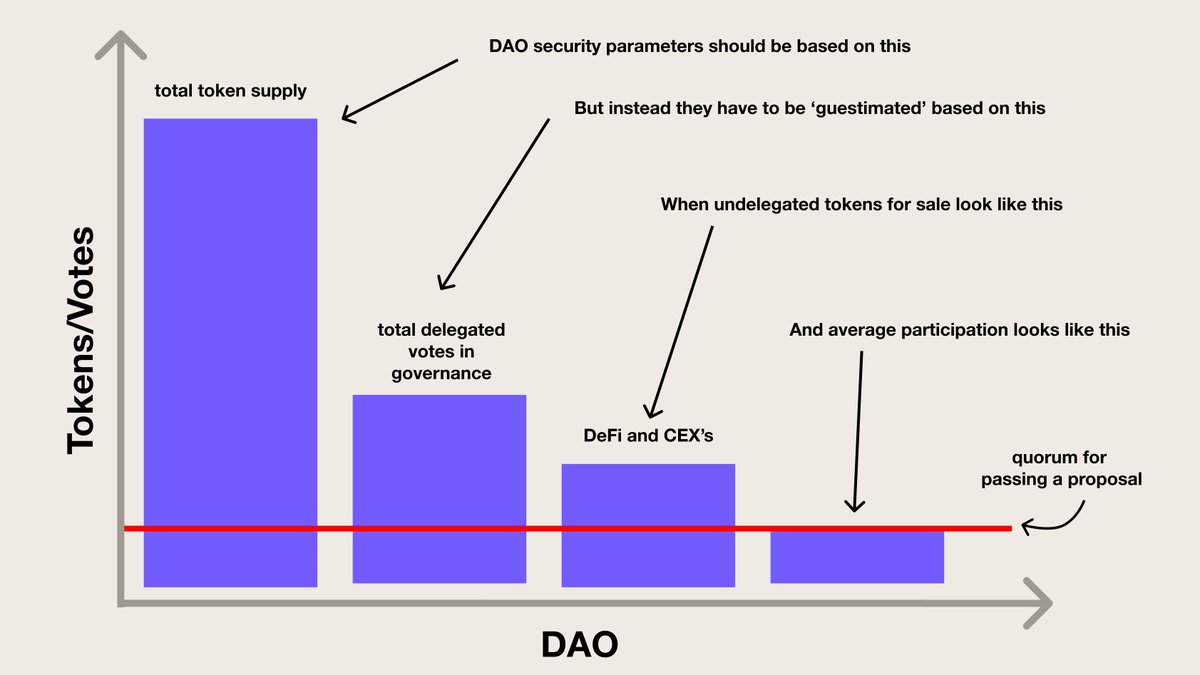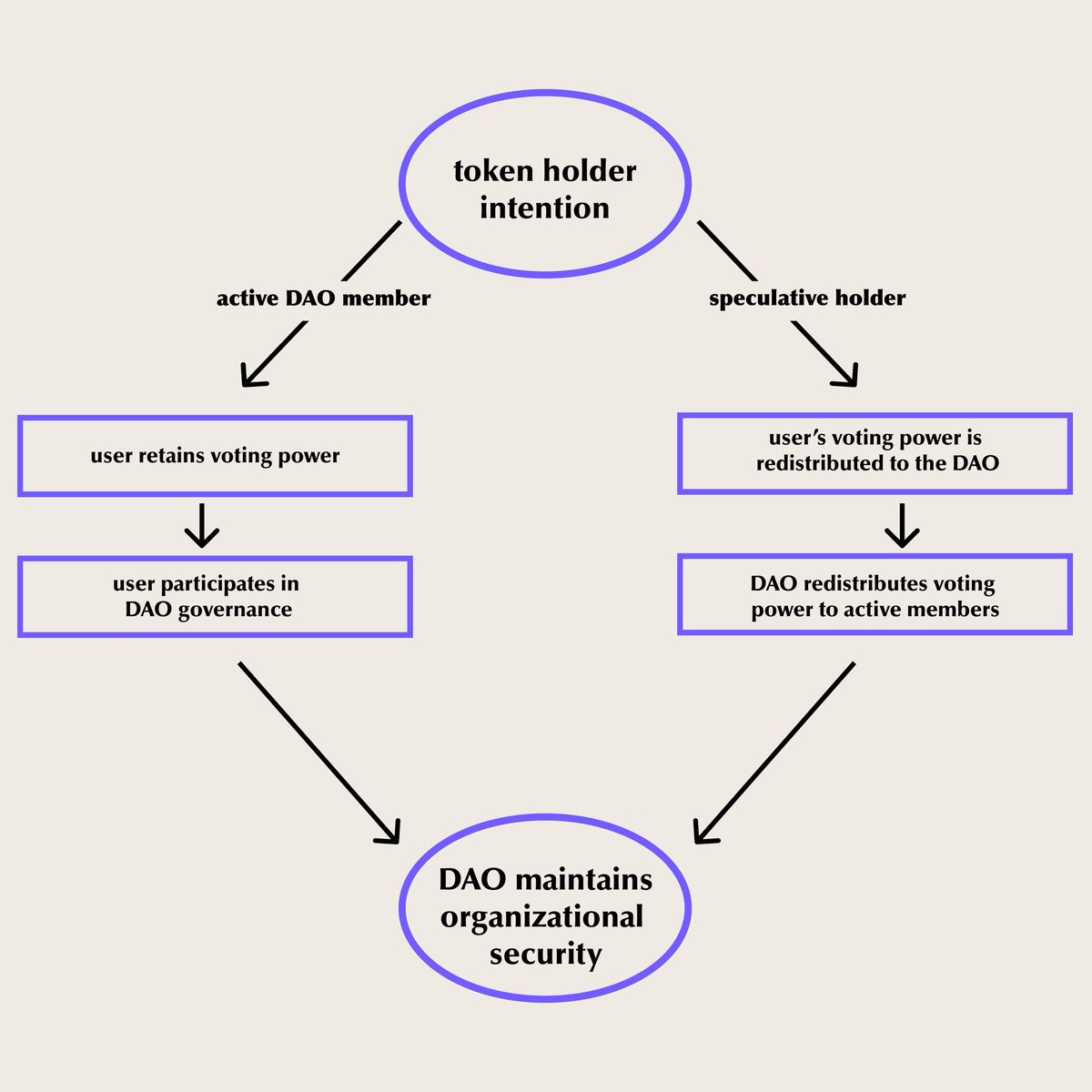Today, we're announcing the next step forward in onchain governance: The Tally Protocol.
The Tally Protocol fully actualizes the value of the systems that token holders own and participate in.
The Tally Protocol unlocks the economic potential of governance tokens by providing a liquidity layer for governance staking and restaking, while optimizing the distribution of voting power to drive economic security back to blockchain protocols.
The Tally Protocol
✤ Creates a smart contract layer that allows DAO token holders to mint Tally Liquid Staked Tokens (tLSTs), which make it easy to earn rewards while maintaining voting power and unlocking additional yield opportunities elsewhere.
✤ Enables governance restaking. Users can stake their governance tokens with Tally and receive a tLST in return that can be deposited in restaking systems. The voting power associated with the governance token remains active.
✤ Increases DAO security. Even the largest DAOs today are at risk of attacks due to low participation in governance. The Tally Protocol reactivates voting power held dormant in DeFi smart contracts and centralized exchanges by returning undelegated voting power to the DAO for redistribution. Undelegated tokens staked in the Tally Protocol are also returned to the DAO for redistribution. This way, DAOs can maintain control over their own security while enhancing token utility.
✤ Incentivizes effective governance. The Tally Protocol ensures token holders no longer have to choose between governance and financial utility. By requiring token holders to delegate to an active participant to earn staking rewards, voting power remains with active DAO voters, enhancing security against malicious attacks and preventing passive governance.
✤ Sustainably incentives DAO delegates. The Tally Protocol creates a fair and transparent mechanism for rewarding active delegates. The modularity of the protocol allows DAOs to experiment with new mechanisms and designs for compensation.
Tally is leveraging its deep expertise, experience, and partnerships to bring the liquidity and security layer to DAOs everywhere. The Tally Protocol is permissionless and open source, and we’ll deliver it to everyone all at once via the Tally platform.
We started @tallyxyz 4 years ago with a mission: to scale human coordination by enabling credibly neutral governance. Today, over $30B is managed by DAOs on Tally and over $661M has been transferred on Tally by the category leaders of crypto.
We’ve partnered with @ScopeLift, the leading governance smart contract development team, to bring the Tally Protocol to life. ScopeLift developed Unistaker and Flexible Voting, foundations upon which the Tally Protocol is built.
Together, we’re going to take DAOs to the next level.
Welcome to the future of decentralization.


The Tally Protocol fully actualizes the value of the systems that token holders own and participate in.
The Tally Protocol unlocks the economic potential of governance tokens by providing a liquidity layer for governance staking and restaking, while optimizing the distribution of voting power to drive economic security back to blockchain protocols.
The Tally Protocol
✤ Creates a smart contract layer that allows DAO token holders to mint Tally Liquid Staked Tokens (tLSTs), which make it easy to earn rewards while maintaining voting power and unlocking additional yield opportunities elsewhere.
✤ Enables governance restaking. Users can stake their governance tokens with Tally and receive a tLST in return that can be deposited in restaking systems. The voting power associated with the governance token remains active.
✤ Increases DAO security. Even the largest DAOs today are at risk of attacks due to low participation in governance. The Tally Protocol reactivates voting power held dormant in DeFi smart contracts and centralized exchanges by returning undelegated voting power to the DAO for redistribution. Undelegated tokens staked in the Tally Protocol are also returned to the DAO for redistribution. This way, DAOs can maintain control over their own security while enhancing token utility.
✤ Incentivizes effective governance. The Tally Protocol ensures token holders no longer have to choose between governance and financial utility. By requiring token holders to delegate to an active participant to earn staking rewards, voting power remains with active DAO voters, enhancing security against malicious attacks and preventing passive governance.
✤ Sustainably incentives DAO delegates. The Tally Protocol creates a fair and transparent mechanism for rewarding active delegates. The modularity of the protocol allows DAOs to experiment with new mechanisms and designs for compensation.
Tally is leveraging its deep expertise, experience, and partnerships to bring the liquidity and security layer to DAOs everywhere. The Tally Protocol is permissionless and open source, and we’ll deliver it to everyone all at once via the Tally platform.
We started @tallyxyz 4 years ago with a mission: to scale human coordination by enabling credibly neutral governance. Today, over $30B is managed by DAOs on Tally and over $661M has been transferred on Tally by the category leaders of crypto.
We’ve partnered with @ScopeLift, the leading governance smart contract development team, to bring the Tally Protocol to life. ScopeLift developed Unistaker and Flexible Voting, foundations upon which the Tally Protocol is built.
Together, we’re going to take DAOs to the next level.
Welcome to the future of decentralization.



• • •
Missing some Tweet in this thread? You can try to
force a refresh







